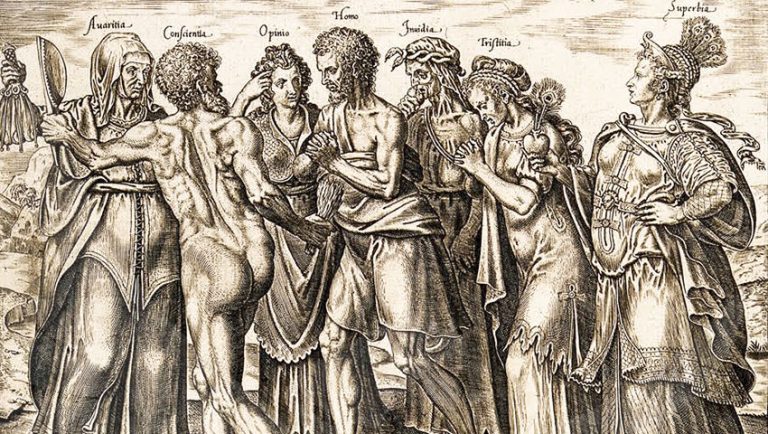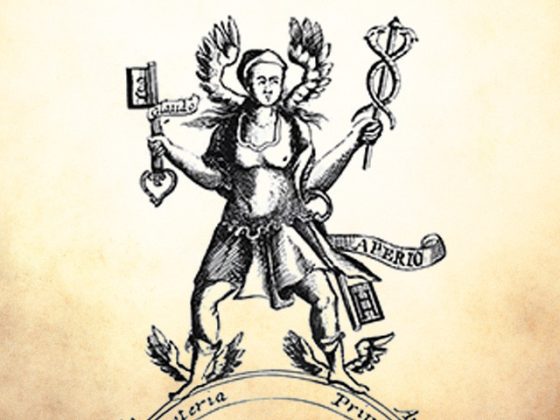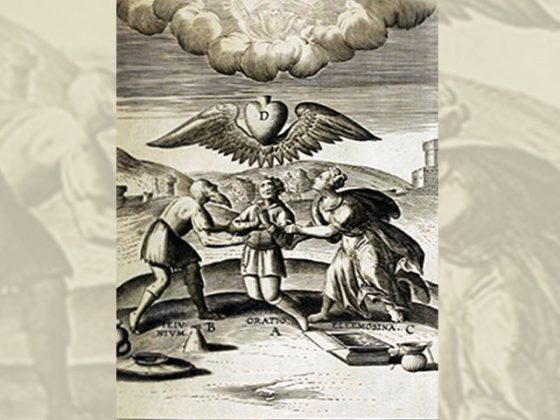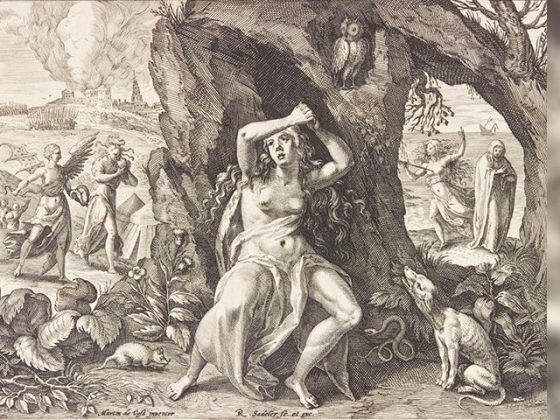Very endearing friends:
I am sending you this engraving that was published by Philip Galle (1537-1612) and entitled by some historians as…
…A MAN PRAYS TO THE CONSCIOUSNESS
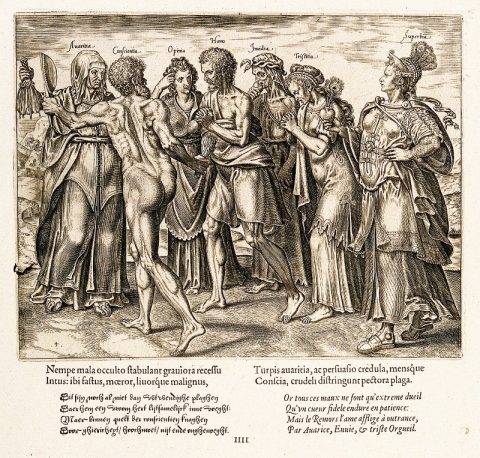
I transcribe the text that appears in Latin and French with its possible translation:
Nempe mala occulto stabulant grauiora recessu
Intus: ibi fastus, mœror, liuorqúe malignus,
Turpis auarita, ac persuasio credula, mens'que
Conscia, crudeli distringunt pectora plaga.
Translation :
‘Verily, evils dwell in a hidden refuge within: there pride, affliction and malignant envy, vile avarice and credulous persuasion and conscious mind, annoy the feelings with a cruel sore.'
Or tous mes maux ne font qu´extreme dueil
Qu´vn cueur fidele endure en patience:
Mais le Remors l´ame afflige à outrance,
Par Auarice, Enuie, & triste Orgueil.
‘But all my ills only cause extreme pain
that a faithful heart patiently endures:
But remorse grieves the soul exceedingly,
By Avarice, idleness and sad pride'.
Latin letters above each of the figures from left to right:
Auaritia: Avarice.
Conscientia: Consciousness.
Opinio: Erroneous belief.
Homo: Man.
Inuidia: Envy.
Tristitia: Sadness.
Superbia: Pride.
The second engraving was entitled by its inventor, Maarten van Heemskerck…
…SUI NOTITIA HORRORES CONSCIA INCUTIT
─'Conscious self-knowledge causes conscious horrors'─
This second engraving was made by Maarten Van Heemskerck and is part of the series of fourteen engravings published by Dirck Volckertszoon Coornhert in 1550 with the name: Jacob's Ladder or The Allegory of the Road to Eternal Bliss.
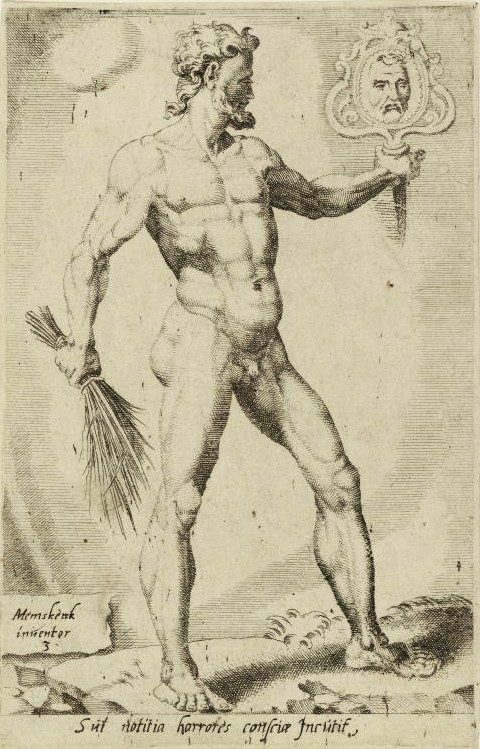
The naked man looks at himself in a mirror and holds a bundle for birching/bundle of birch in his hands.
Analysis:
Dear readers:
The first engraving with its Latin phrases/sentences takes us to self-analysis for us to realize that, certainly, the Ego has its nooks and crannies, its recesses where it usually hides to continue bothering us with its psychological tricks.
In the first engraving we can appreciate how the “I” likes to show itself as a group and attack our poor psychism. Behold them there, each with his arrogance and petulance, while the humanoid does not know which one of them to turn to.
The character who bears the title of HOMO appears begging that other who is naked and who we here call CONSCIENTIA, as if asking for help in order to be able to understand himself.
Undoubtedly, as it is well described in this engraving, all these energetic entities cause intense pain in our spiritual flesh that is sometimes unbearable, and although we try to be patient, that does not mean that remorse does not tear us to pieces morally.
The second engraving, which shows us a naked man looking at himself in a mirror, makes an unequivocal allusion to the need to undress ourselves psychologically in order to get to the bottom of who we really are, that is, to reach the true discovery of our weaknesses in order to correct them. In this way we will achieve a true identity, a true image and true values.
I now give you a few sentences to be reflected upon:
“To defend or deny our defects when we are rebuked is to increase them.”
La Rochefoucauld
“The worst of defects is to imagine ourselves exempt from them.”
Bottach
“He who endures my defects is my master, even if he is my servant.”
Goethe
“Sometimes it costs much more to eliminate a single defect than to acquire a hundred virtues.”
La Bruyère
“Being weak is the real misery.”
Milton
ARS MORIENDI.
─'The art of dying'─.
KWEN KHAN KHU


